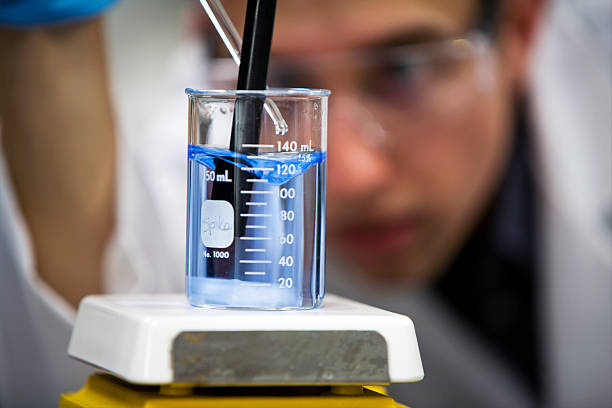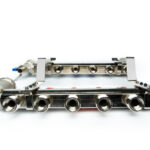Have you ever wondered what happens to the water that disappears down your drain? Most of us don’t give it a second thought—but behind the scenes, an entire industry works tirelessly to purify and recycle it. This is where the expertise of best sewage treatment plant manufacturers comes into play, turning wastewater into clean, reusable resources that sustain communities and industries alike.
Why Sewage Treatment Matters More Than Ever
As cities expand and industries grow, so does the burden on our water systems. According to the United Nations Water Report, nearly 80% of global wastewater flows back into the environment untreated. That’s a staggering figure—and a wake-up call. Proper sewage treatment isn’t just about environmental compliance; it’s about survival. Clean water sustains life, while untreated sewage pollutes rivers, damages ecosystems, and threatens public health.
Understanding the Sewage Treatment Process
The journey from dirty to clean water is nothing short of a technological marvel. Modern sewage treatment plants are built with innovation at their core, designed to minimize waste and maximize recovery. Here’s how it typically works:
- Primary Treatment: This stage removes large particles and debris using screening and sedimentation tanks.
- Secondary Treatment: Biological processes—like activated sludge or trickling filters—break down organic matter using microorganisms.
- Tertiary Treatment: Advanced filtration, disinfection, and chemical treatments ensure the water meets strict purity standards before being discharged or reused.
Some of the most advanced facilities even reclaim water for industrial use, landscaping, and agriculture—helping reduce the overall demand on freshwater sources.
What Sets Leading Manufacturers Apart
The world of sewage water treatment manufacturing is not just about machinery—it’s about mastery. The best companies combine innovation, sustainability, and customer-centric engineering to create long-lasting solutions. Here’s what distinguishes top manufacturers in this field:
- Customized Design: Every location has different water chemistry and flow rates. Leading manufacturers tailor systems to these specifics.
- Energy Efficiency: Modern systems use advanced aeration and low-energy pumps to minimize operational costs.
- Automation & Monitoring: IoT-based systems track water quality in real time, reducing human error and ensuring consistent performance.
- Eco-Friendly Focus: Many use green technologies like membrane bioreactors and zero-liquid-discharge systems to protect the environment.
Industries Driving the Demand for Sewage Treatment Solutions
The need for efficient sewage treatment is no longer limited to municipalities. Industries across the board are investing heavily in wastewater management due to tightening environmental regulations and rising sustainability goals. Some key sectors include:
- Food & Beverage: Ensuring safe disposal of organic waste and maintaining hygiene standards.
- Textile & Dyeing: Removing chemical residues and colorants before water discharge.
- Pharmaceuticals: Eliminating bio-contaminants and chemical effluents that could harm aquatic ecosystems.
- Real Estate & Hospitality: Integrating compact sewage treatment systems into residential and commercial complexes.
Choosing the Right Sewage Water Treatment Manufacturer
With dozens of companies in the market, selecting the right manufacturer can feel overwhelming. However, a few guiding principles can make the decision easier:
- Proven Experience: Look for manufacturers with a portfolio of successful installations across diverse sectors.
- After-Sales Support: Maintenance and service contracts are critical for system longevity.
- Regulatory Compliance: Ensure the company’s systems meet local and international environmental standards.
- Innovation Commitment: A strong R&D department often signals a manufacturer’s long-term reliability.
How Sewage Treatment Contributes to Sustainability
Investing in sewage treatment isn’t just an act of compliance—it’s a step toward a circular economy. Treated water can be reused for irrigation or industrial processes, reducing the need for freshwater extraction. Sludge generated in the process can be converted into biogas or compost, providing renewable energy and enriching soil. As per the U.S. Environmental Protection Agency, effective sewage management can reduce greenhouse gas emissions and improve overall ecosystem health.
FAQs About Sewage Water Treatment Manufacturers
1. What is the difference between sewage and wastewater treatment?
Sewage treatment focuses primarily on domestic waste, while wastewater treatment includes industrial and agricultural effluents as well. Both processes aim to make water reusable and safe for discharge.
2. How long does a sewage treatment plant last?
With proper maintenance, modern sewage treatment plants can last 15–25 years. Key components like membranes or aerators may require periodic replacement.
3. Can treated sewage water be reused?
Yes. Treated water can be reused for non-potable purposes such as gardening, flushing, or industrial cooling—significantly conserving fresh water.
4. Are small-scale sewage treatment plants available?
Absolutely. Compact modular plants are now available for apartments, hotels, and small businesses—ideal for areas with space constraints.
Final Thoughts
The world’s relationship with water is changing fast—and so are the technologies that manage it. Sewage water treatment manufacturers are not just solving an environmental problem; they’re building the foundation for a cleaner, more sustainable future. By supporting these innovations, we take one step closer to ensuring that every drop counts—for us and generations to come.



